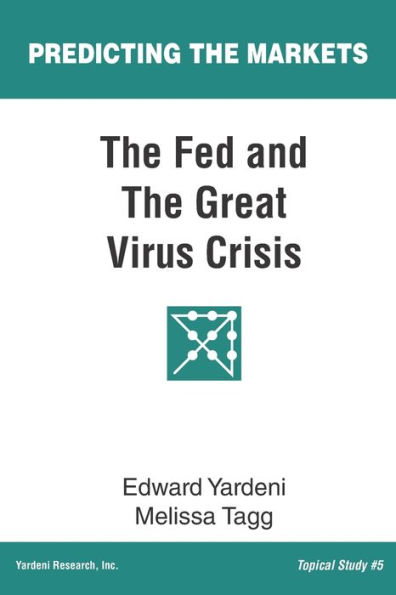In this study, Edward Yardeni and Melissa Tagg, two of the world's most experienced and widely followed investment strategists and Fed watchers, provide investors with a practical understanding of the forces that drove monetary and fiscal policies during 2020 in response to the Great Virus Crisis. The focus is on the Fed.
At the beginning of the year, Fed Chair Jerome Powell and his colleagues expected that the longest economic expansion in US history would continue and that the federal funds interest rate would remain range-bound between 1.50% and 1.75%.The outlook changed dramatically for the worse on March 11, 2020, when the World Health Organization declared that Covid-19 had spread around the world. It was officially a pandemic.
That marked the beginning of the world war against the virus. It was a war on three fronts: the health front, the economic front, and the financial front. The Fed responded by the lowering its key interest rate to zero on March 15 and implemented an open-ended program of quantitative easing on March 23, "QE4ever." Various liquidity facilities that were used during the Great Financial Crisis were reopened and new ones added. Fiscal policy joined the battle, with substantial spending programs initiated. Collectively, these measures amounted to trillions of dollars of support.
In this study, the authors explain why this two-pronged monetary/fiscal response worked so well on the financial and economic fronts. They also consider its potential long-term consequences on inflation, financial stability, and the role of government in the economy.
In this study, Edward Yardeni and Melissa Tagg, two of the world's most experienced and widely followed investment strategists and Fed watchers, provide investors with a practical understanding of the forces that drove monetary and fiscal policies during 2020 in response to the Great Virus Crisis. The focus is on the Fed.
At the beginning of the year, Fed Chair Jerome Powell and his colleagues expected that the longest economic expansion in US history would continue and that the federal funds interest rate would remain range-bound between 1.50% and 1.75%.The outlook changed dramatically for the worse on March 11, 2020, when the World Health Organization declared that Covid-19 had spread around the world. It was officially a pandemic.
That marked the beginning of the world war against the virus. It was a war on three fronts: the health front, the economic front, and the financial front. The Fed responded by the lowering its key interest rate to zero on March 15 and implemented an open-ended program of quantitative easing on March 23, "QE4ever." Various liquidity facilities that were used during the Great Financial Crisis were reopened and new ones added. Fiscal policy joined the battle, with substantial spending programs initiated. Collectively, these measures amounted to trillions of dollars of support.
In this study, the authors explain why this two-pronged monetary/fiscal response worked so well on the financial and economic fronts. They also consider its potential long-term consequences on inflation, financial stability, and the role of government in the economy.

The Fed and The Great Virus Crisis
188
The Fed and The Great Virus Crisis
188Paperback

Product Details
| ISBN-13: | 9781948025102 |
|---|---|
| Publisher: | Yri Books |
| Publication date: | 03/17/2021 |
| Series: | Predicting the Markets Topical Study , #5 |
| Pages: | 188 |
| Product dimensions: | 6.00(w) x 9.00(h) x 0.40(d) |
